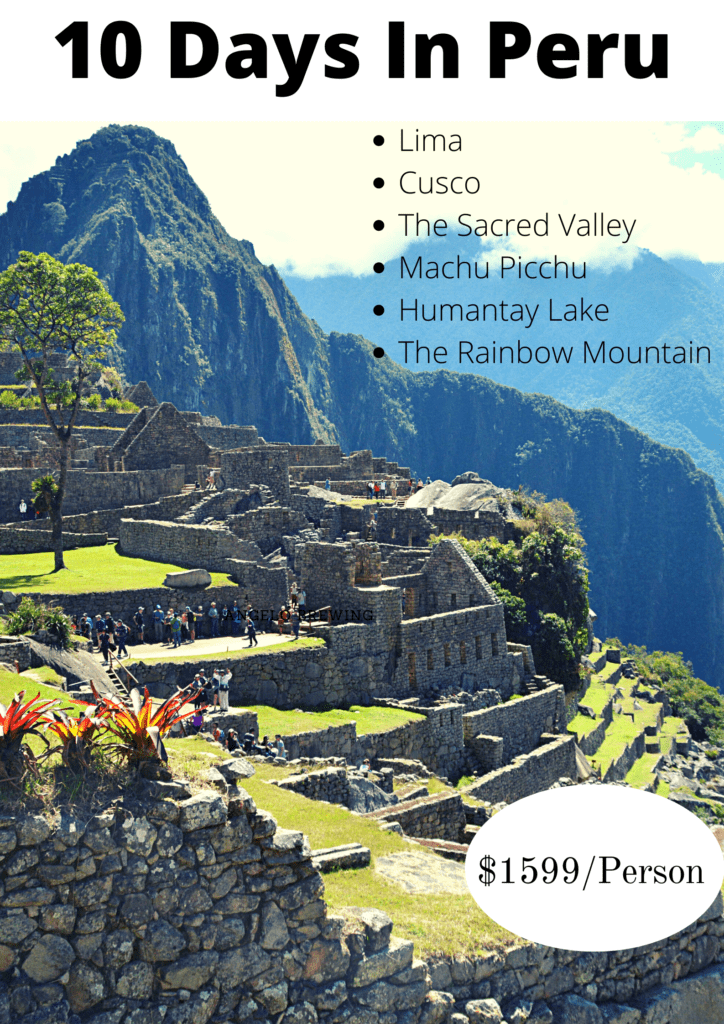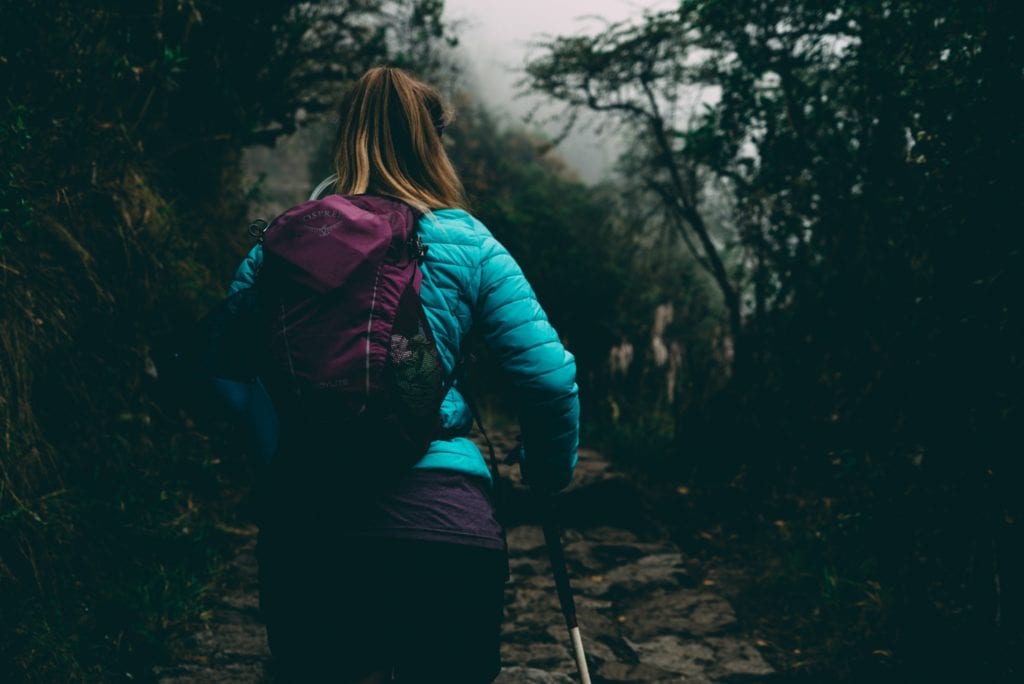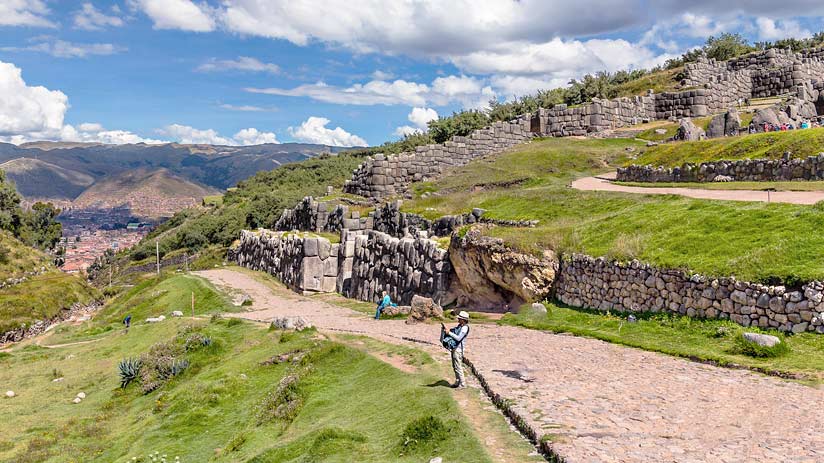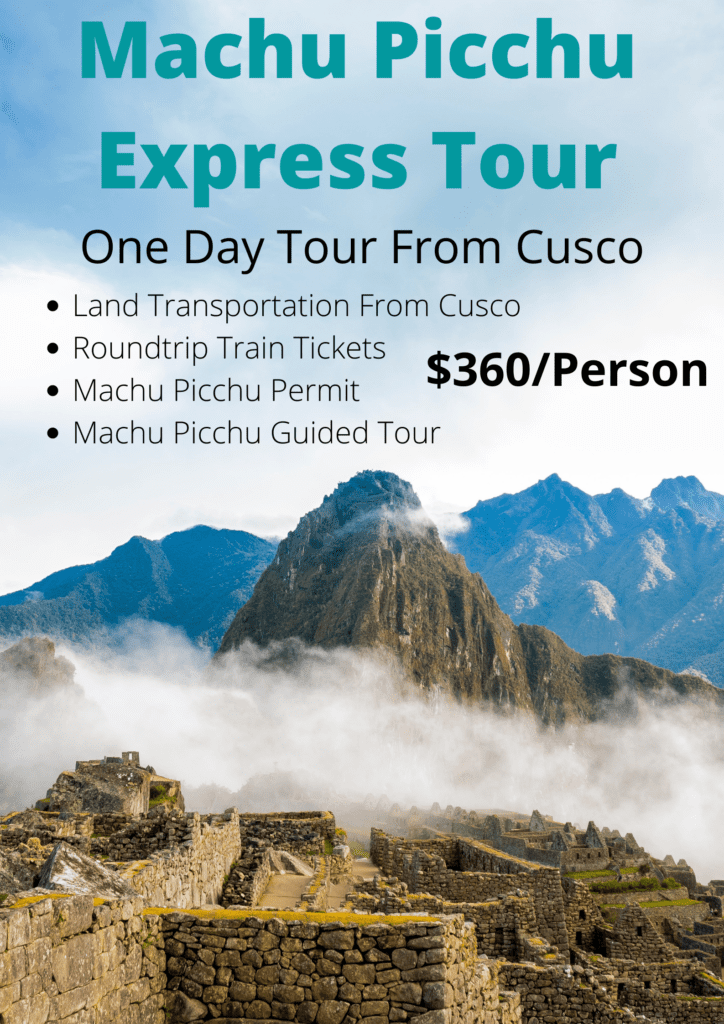Training For Machu Picchu
James Bustamante is Native to New York but born to Peruvian parents. He has been traveling throughout Latin America since early 2003 and finally made his home in Peru. James has made his way by eating and traveling through almost every country in Central and South America.
Last Updated on December 28, 2023 by James Bustamante
There are several ways to get to Machu Picchu, including a wide assortment of multiday and single-day hikes. If you plan on taking one of the multiday versions, several vital elements will help with training for Machu Picchu.
The most common routes or hikes to Machu Picchu will be the four-day Inca trail, the five-day Salkantay trek, and the two-day Inca trail. The first two will be more demanding, and it doesn’t hurt to be prepared. Remember that, on average, you will be hiking 7 miles (11 km) each day, and to top it off, the distance will be in a high-elevation landscape. Below we go over some key points to look out for when training for Machu Picchu.
Cardiovascular Training for Machu Picchu
Improving your cardiovascular capacity is an essential tool in your arsenal to prepare for the hike to Machu Picchu. Although hiking is usually a moderately difficult activity, adding the factor of high elevation into the mix will make the trek more challenging.
This is why working on your cardio is vital to your training. Remember, the point is to get adequate oxygen through your system during the hike. To achieve a more optimized cardiovascular output, we have some suggestions you can include in your Machu Picchu training program.
Cardiovascular Program For Hikers
We begin with long-distance running for your training program. This does not mean you need to run a marathon every day. However, adding two days/week of long-distance running can improve your cardiovascular system quickly and make training for the Inca Trail and the Machu Picchu hike much more productive.
Hiking for several hours in a single day under the stress of high elevation will undoubtedly have your heart pumping faster than usual, so it is a good idea to jog at a moderate pace as preparation. Begin with a mile and work up to 3 miles (4.8 km) and 6 miles (10 km) at a moderate pace. Don’t worry about finishing the workout quickly. The point is to focus on covering the distance with a light jog. Then, as we progress to more distance, we can focus on our timing.
If you are out of shape, we suggest starting the cardiovascular portion of your training for Machu Picchu at least three months before your trip, so you have enough time to work your way up.
If you are fit and train regularly, you may only need to add a few activities to your routine. This should be done two times a week and should be supplemented with two days of strength training, which we will get into later in this article.
The running portion can be replaced with cycling, swimming, or power walking; running tends to work best to strengthen your cardiovascular system to train for the Salkantay trek or the Inca trail to Machu Picchu. Swimming is good and works your heart; however, it does not mimic the movement and stress on the body that comes with high-altitude hiking.
Strength Training for Hikers
Now that we have an excellent cardiovascular regimen with clear goals, we can get into the strength training portion of the training program. The strength training program detailed below should be performed 2-4 times/week.
Lower Body Training For Hiking
Your lower body will be of utmost importance when hiking in the high elevation of the Andes mountains. We must ensure you have the muscular capacity to withstand the 6-8 hours/day we will be trekking, so we have set up a program below.
- Squats – lightweight – medium weight – 4 sets of 8 repetitions
- Lunges – bodyweight or lightweight – 4 sets of 10 repetitions/leg
- Lying leg curls – 4 sets of 12 repetitions
- Deadlifts – low weight – 3 sets of 6 repetitions (once/week)
Squats are an interesting exercise that works most of your lower body, “squatting” is a natural movement that all humans should be able to do. It is how we would take care of bodily functions if we did not have toilets today. Squats help build your glutes and lower back and strengthen the entire posterior chain. The posterior chain muscles will help with the heavy hiking necessary as we go deeper into the Andes while gaining elevation.
Lunges are an exceptional lower body exercise that will build your quadriceps; these muscles are in charge when hiking back down toward the valley. They help set the pace and stabilize your body as we get closer to Machu Picchu in this case.
The leg curls strengthen your hamstrings, which stabilize posture with your glutes.
Deadlifts build your entire posterior chain, which includes your back and hamstrings. Try doing these once a week for 3-6 repetitions in 3 sets.
Upper Body Training For Hiking
You don’t need to be a big, muscular person to take multiday hikes to Machu Picchu, but it does help to have a strong back and a well-developed core. Carrying a backpack might not seem like a big deal back at sea level, but it can feel like a bag of bricks under high altitude. Below are a few exercises that you should focus on.
- Shoulder press – 3 sets of 8 repetitions
- Pulldowns 3 sets of 8 repetitions or Pull-ups, if you can manage them
- Sit-ups – 5 sets of 30 crunches or 3 sets of 60-second planks
- Kettle-bell rows and swings – 3 sets of 10 repetitions with lightweight
Lateral pulldowns or pull-ups assist with the posterior chain, strengthen your core, and work the biceps. If you can manage pull-ups, then do those instead.
Kettlebell rows and swings work your entire body and heavily assist in strengthening your core, shoulders, and lower back.
The shoulder press is the king of upper body movements since it works your deltoids and core (if you are standing) and indirectly works your arms.
All of these exercises will let you get stronger in a short period. Remember, the point is not to be “big” or “ripped” but to increase your strength over time so you can take on long hiking sessions under high elevation pressure.
If Possible, Find a Practice Hike Near You
There is no replacement for the real thing, but it would be a big help if you could find a local hike near you that will allow you to have practice runs, at least two before you travel. You can try a couple of day hikes as part of your cardio program, where you spend the day trekking. Try doing this leading up to your trip to Peru as part of your training for Machu Picchu.
A full-day hike that includes trekking through a level and elevated terrain will begin to get your body ready for the real thing. Now, there is no replacement for the real thing. However, high elevations like the one we will find on the hikes to Machu Picchu will take a lot of work to find in most places.
Remember that during any treks, you will be subjected to 11,000 – 15,000 feet above sea level (3,399 – 4,600 meters). So, the idea is to focus on your pace, movement, and stamina.
Try wearing a backpack with around 30 lbs (13.6 kg) during your trial runs. Make sure they are at least 6-8 hours long and also try to carry a walking stick with you.
Hikers Notes: Elevation masks do not work to help you acclimate at sea level. Sleep in high elevation is the only way to get your body used to the altitude.
Mental Fortitude is Key
This is where many hikers might develop an issue. One of the most common questions at the agency is whether the hikes to Machu Picchu will be too strenuous for them to complete. The answer is no, and training for The Inca Trail or any other route to the Inca city will make your trip much more enjoyable and easier to manage.
The hikes to Machu Picchu are not particularly difficult; we have travelers of all ages who regularly complete these treks without any issues. However, people tend to psych themselves out because of the elevation involved. Training will help you with your physical strength; however, many times, what we should also focus on is our mental fortitude.
Make sure you have a positive attitude before you board that plane to Peru, and remind yourself that this is a challenge you will accomplish and have fun doing it.
When we have clients mainly concerned with their performance, we will let them know that, if possible, they should join a short marathon or some long-distance race. The challenge will test their physical abilities and give them a winning attitude.
Any organized competition will do, even if you are taking a weekend hike near your home; try to compete with your previous time.
Remember that mental fortitude is as essential as endurance and physical strength. Visualize and remember: You can do this because you want to do this.
Getting The Proper Nutrition To Hike
The next step in our training for the Machu Picchu program is nutrition. Most people who already make it a habit to work out know what they should eat to maintain a good performance. Hikers on any of the multiday hikes to Machu Picchu will likely burn anywhere from 4,000 – 6,000 calories each day simply by walking.
The high-calorie burn is partly due to (once again) the high elevation of the terrain. Make sure you eat healthy protein sources accompanied by healthy carbohydrates. Your body needs to receive good fuel sources, and the easiest way is to eat relatively “clean” while training for Machu Picchu.
The meals during the hike will be primarily carbohydrate-based to keep our energy levels high. Proteins will be chicken, beef, and pork unless travelers specify they cannot have one. We will also provide vegan or vegetarian meal options upon request, but this must be packed before the hike. If you are a vegetarian or vegan, please notify your trekking group supervisor to ensure the appropriate groceries are packed for you.
Get The Proper Trekking Gear For Machu Picchu
Bringing the proper gear along is a prime indicator that you are prepared for the challenge to Machu Picchu. We always include a packing list for all travelers taking any treks. Among the items you might want to bring along, we have added a brief list below:
- Hiking shoes (hiking boots aren’t essential)
- Trekking style pants – zipper pants
- Spare socks (it will get damp and muddy in some parts)
- A good coat or jacket
- A set of thermal shirts or pants for the overnight camps.
- sunscreen
- chapstick or lip balm
- Sleeping bags
- deodorant, toilet paper, toothbrush, toothpaste
Train With a Hiking Buddy
Training for Machu Picchu will be more fun if you have someone to go through the process with. They don’t necessarily have to take the hike with you (although the more, the merrier, so I’ve heard), but having someone go through the training program might make the whole process easier and much more fun.
If someone wants to take this challenge with you, let them know. Pushing each other to improve physically will be a great asset, and supporting each other throughout the process will help develop a winning mentality.
Conclusion
Training for Machu Picchu will take some time, but following the steps mentioned above will make the entire process easier to accomplish. As a result, you will enjoy the hikes much more and appreciate that you took this high-elevation challenge and completed it.
Don’t hesitate to get in touch with our travel advisors today for more information about Peru tour packages or our Machu Picchu tours.
Frequently Asked Questions
How soon should I start training for Machu Picchu?
We recommend starting your training regimen at least three months before you travel. If you are generally a fit person and work out, you might only have to change a few things in your training regimen like adding long-distance running.
How much distance should I cover when training for Machu Picchu?
We recommend a long-distance run of 2-6 miles (3.2 – 10 km) to get accustomed to what it will feel like to hike in high elevation.
Will training with an elevation mask help?
No, not really. The only way for your body to get accustomed to high elevation is to sleep under high elevation. So it is not just your lungs that need to acclimate but your entire body.
Will I need to train to climb Machu Picchu?
No, not really. The treks leading to Machu Picchu require a certain fitness level, but the actual climb to Machu Picchu is relatively easy.






